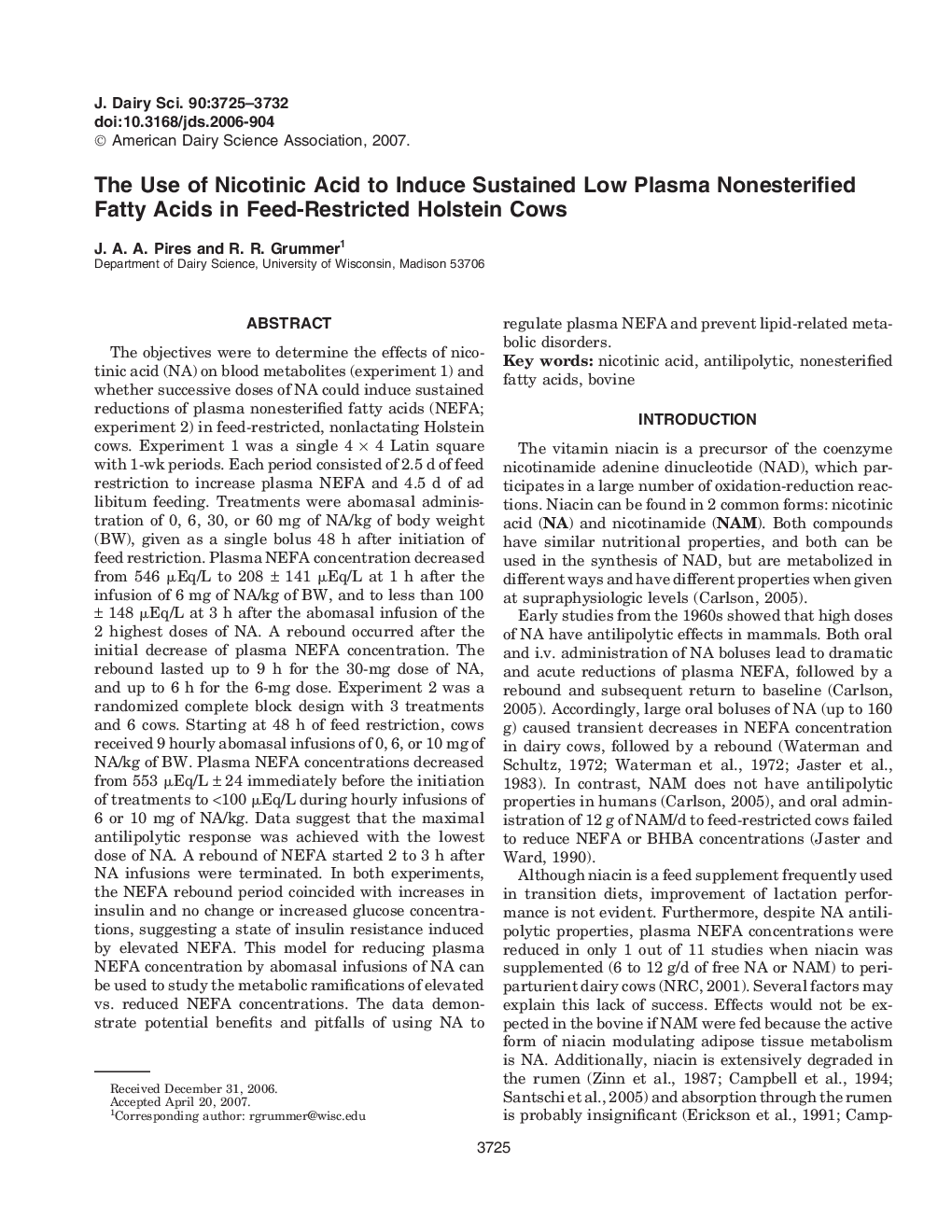| Article ID | Journal | Published Year | Pages | File Type |
|---|---|---|---|---|
| 2440452 | Journal of Dairy Science | 2007 | 8 Pages |
The objectives were to determine the effects of nicotinic acid (NA) on blood metabolites (experiment 1) and whether successive doses of NA could induce sustained reductions of plasma nonesterified fatty acids (NEFA; experiment 2) in feed-restricted, nonlactating Holstein cows. Experiment 1 was a single 4 × 4 Latin square with 1-wk periods. Each period consisted of 2.5 d of feed restriction to increase plasma NEFA and 4.5 d of ad libitum feeding. Treatments were abomasal administration of 0, 6, 30, or 60 mg of NA/kg of body weight (BW), given as a single bolus 48 h after initiation of feed restriction. Plasma NEFA concentration decreased from 546 μEq/L to 208 ± 141 μEq/L at 1 h after the infusion of 6 mg of NA/kg of BW, and to less than 100 ± 148 μEq/L at 3 h after the abomasal infusion of the 2 highest doses of NA. A rebound occurred after the initial decrease of plasma NEFA concentration. The rebound lasted up to 9 h for the 30-mg dose of NA, and up to 6 h for the 6-mg dose. Experiment 2 was a randomized complete block design with 3 treatments and 6 cows. Starting at 48 h of feed restriction, cows received 9 hourly abomasal infusions of 0, 6, or 10 mg of NA/kg of BW. Plasma NEFA concentrations decreased from 553 μEq/L ± 24 immediately before the initiation of treatments to <100 μEq/L during hourly infusions of 6 or 10 mg of NA/kg. Data suggest that the maximal antilipolytic response was achieved with the lowest dose of NA. A rebound of NEFA started 2 to 3 h after NA infusions were terminated. In both experiments, the NEFA rebound period coincided with increases in insulin and no change or increased glucose concentrations, suggesting a state of insulin resistance induced by elevated NEFA. This model for reducing plasma NEFA concentration by abomasal infusions of NA can be used to study the metabolic ramifications of elevated vs. reduced NEFA concentrations. The data demonstrate potential benefits and pitfalls of using NA to regulate plasma NEFA and prevent lipid-related metabolic disorders.
